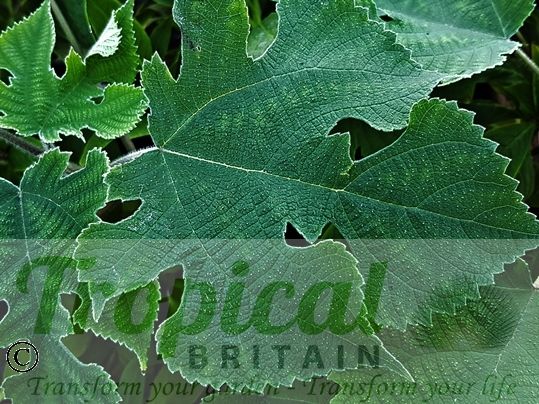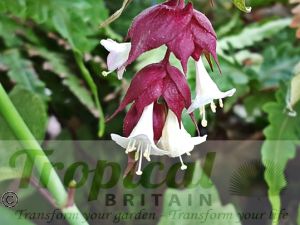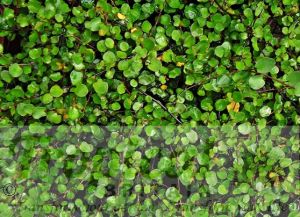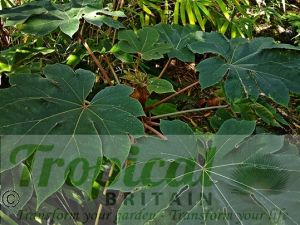Broussonetia papyrifera
Broussonetia papyrifera, Paper Mulberry, is a large deciduous Asian tree that can grow from 10-20 m or more in height. It has attractive very exotic-looking foliage which can be quite variable in shape but usually forms a distinctive lobed and broadly ovate form with either three or five lobes depending upon the age of the leaf. A dioecious wind-pollinated plant, male trees bear woolly green and cream-coloured catkins and female trees bear small green flowers on a spherical head with long pink styles followed by large orange-red fruits which are edible when steamed. Used for centuries in China and Japan for making paper, Paper Mulberry was introduced throughout Polynesia where strips of inner bark are beaten together with wooden mallets in the production of Tapa Cloth.
Broussonetia papyrifera has become naturalised throughout many countries of the world and care should be taken to ensure it does not become invasive. In Pakistan, Argentina and Uganda as well as in some US states its spread - by both seeds and suckers - has made it a pest. Remove suckers regularly to avoid it becoming weedy and do not plant close to walls or structural foundations.
Additional Information
| Order | Rosales |
|---|---|
| Family | Moraceae |
| Synonyms | Broussonetia billardii, Broussonetia cordata, Broussonetia cucullata, Broussonetia dissecta, Broussonetia elegans, Broussonetia kasii, Broussonetia kazi, Broussonetia maculata, Broussonetia nana, Broussonetia navicularis, Broussonetia navifolia, Broussonetia papyrifera var. integrifolia, Broussonetia spathulata, Broussonetia tricolor, Morus papyrifera, Papyrius japonica, Papyrius papyrifera, Papyrius polimorphus, Smithiodendron artocarpioideum, Streblus cordata, Trophis cordata |
| Geographical Origin | Asia: China. Taiwan, Tibet, Cambodia, Japan, Korea, Laos, Malaysia, Myanmar, Sikkim, Thailand, Vietnam; Naturalised in Pakistan, Africa, Pacific Islands, Europe, USA |
| Cultivation | Full sun. A fertile alkaline soil. Plant well away from the house and cut back any suckering growth every year |
| Eventual Height | 6-20m |
| Eventual Spread | 4-10m |
| Hardiness | Hardy in most UK locations down to about -10C. New growth in the spring can be cut back by late frosts. Benefits from a thick winter mulch |

Free DELIVERY
ON ALL ORDERS OVER £99THIS OFFER IS VALID ON ALL OUR STORE ITEMS.














